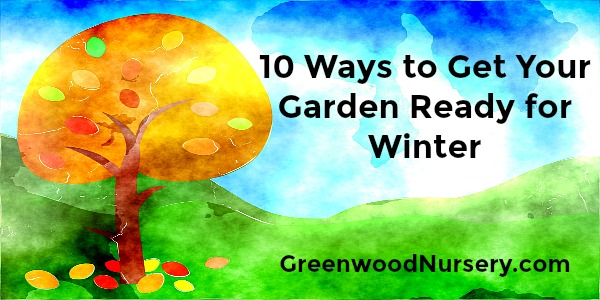Free gardening gloves when you spend $75.00 or more!

In many areas of the U.S., even long-lasting plants that held on through October will start fading away in November. There's still plenty to do in the garden, though! Taking initiative this month will set your garden up for success later on.
Here are 10 different ways to help get your garden ready to survive the winter and thrive in the spring. (Not all 10 are applicable to every region, since temperatures vary so widely across the country this time of year.)
1. Compost Pumpkins (And Other Decorative Vegetables)
If you have pumpkins left over from Halloween, add them to your compost pile once they've outlived their use as decorations. Once Thanksgiving has passed, you can also do the same with any other decorative gourds or ears of corn.
Be sure you're only adding the vegetable matter to the compost pile – remove any additional decorations (such as leftover candle wax from inside pumpkins), and don't use pumpkins that have been painted. Chopping up the vegetables will help them compost faster.
2. Plant Cover Crops or Sow Wildflower Seeds
For vegetable gardens, sowing a cover crop will help protect the soil and prevent weeds over the cooler months. The crops also add nutrients to the soil, and they can be pulled and composted when you're ready to plant other things in the spring.
If you're more interested in growing flowers than vegetables, spread some wildflower seeds. Native wildflowers are easy to grow and care for, and they will bring butterflies and other wildlife to your yard all throughout the growing season. (Be sure to check planting instructions for your hardiness zone; some areas should wait until spring to plant wildflower seeds.)
3. Plant Bulbs for Spring
If you want to add daffodils, hyacinths, crocuses, and other spring bloomers to your garden, now is the time to plant those bulbs. Make sure you get them in the ground early enough according to individual plant requirements.
4. Plant Shrubs and Trees
Bare-root shrubs and bare-root trees are shipped when their branches are bare. They need to be planted while they are still dormant, and can't be put in the ground once it's frozen, making late fall an ideal time for ordering and planting.
5. Use Shredded Leaves As Mulch
Whole leaves can cause problems for your garden plants (and for your lawn) when they're soggy with rain. Shredded leaves, on the other hand, work well as a mulch that feeds the soil as it breaks down.
Clear whole leaves from your plant beds, and use a lawn mower with an attached bag to chop up and gather leaves for use as mulch. Add excess leaves (whole or shredded) to your compost pile.
6. Cut Back Plants As Needed
Not all of your plants will need to be cut back before winter sets in; in fact, most of them likely won't. Leaving perennials alone for the winter can help keep the soil intact, protect the plant's roots, and, if you leave flowers that form seed heads or berries, provide a food source for wildlife.
Some plants, however, such as peonies, should be cut back to help avoid problems and let the plant thrive during the next growing season. This article from The Spruce can help you determine which plants in your garden need trimming this month.
7. Clean Up Garden Beds
It's never a bad time to tidy up your garden beds, but November is often the last chance before freezing temperatures and winter weather set in. In addition to removing whole leaves from around your plants, pick up twigs and other plant debris. Even on plants that don't need to be cut back, check for foliage with any issues, such as pests or disease, and remove it.
If there are any stubborn weeds hanging around, pull those out as well to keep them from sticking around and getting larger and more obnoxious in the spring.
8. Add Compost and Mulch
Add compost or other organic matter to your perennial plant beds to get the soil ready for growth in the spring. Mulch the tops of the beds as well – it keeps the compost in place and prevents rain from washing away the nutrients, and it helps protect your plants from the freezing-thawing cycle in winter.
9. Protect Your Potted Plants
If you haven't already, November is the time to get your potted plants ready for winter. You have a few options for overwintering your container plants, including bringing them inside or covering them with protective material.
10. Take Care of Your Tools
It's not just the plants and soil that need to be tended to in November; your garden tools deserve some attention as well. Get your metal tools cleaned up, sharpened if needed, and well-oiled before storing them for the season (or at least until winter pruning).
Drain your hoses and store them out of the weather to prevent freezing and possible cracks. Clean empty flower pots, dry them thoroughly, and store them where they won't gather water or freeze.
Bonus: Plan Your Garden For Next Year!
While you're getting your garden settled for the winter, it's a perfect time to think ahead to what you want next year's garden to look like. Browse websites or magazines to start gathering ideas of new plants to try, brainstorm possible layouts, and, if your garden was a little more drab this fall than you would have liked, make yourself a note to add more plants with fall color next year.
- cheryl's blog
- Log in or register to post comments







